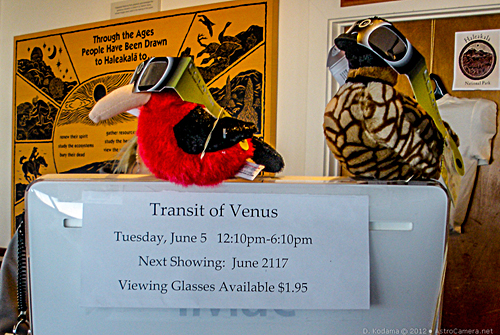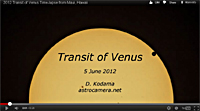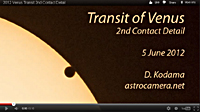|
June 5, 2012 brought the last of a pair of transits of Venus across the sun for the 21st century. Unlike the 2004 transit which took us to Zambia in Africa, this time we had the option to stay home and watch just the first part of the transit, or to travel only a short distance to see the transit in its entirety. We chose the latter, deciding to travel to Haleakala on Maui, Hawaii. Haleakala is an easily accessible high point (10,000 ft) with good seeing, logistically convenient since I have relatives living on Maui, and a good excuse to have a vacation with our fellow eclipse chasers Greg and Vicki who were flying in from Chicago. T-day (Transit Day), Minus OneOne day prior to the transit, we took a trip to the Haleakala summit to check things out and found that the high winds which had already been blowing for several weeks had not abated. I was told that wind speeds up to 57 mph were recorded that day, causing us a lot of anxiety about the way the next day would go. Fortunately we were able to locate a relatively sheltered spot which still afforded a clear view all the way down to the western horizon, thanks to our Haleakala Amateur Astronomers contact, Rob Ratkowski. Many, many thanks, Rob!
T-day (Transit Day)On transit day, heavy clouds blanketed most of the island, but Haleakala's summit was clear. On top of that, the winds had calmed down to the more normal 15-20 mph, making the transit viewing a complete success.
All transit photos (including shots for time-lapse videos) were taken with a Nikon D700 + 2x teleconverter on a Borg 100ED telescope (with Thousand Oaks solar filter) for an effective focal length of 1280mm. Exposures were 1/2000 sec. (1/1000 at sunset) at ISO 800.
|
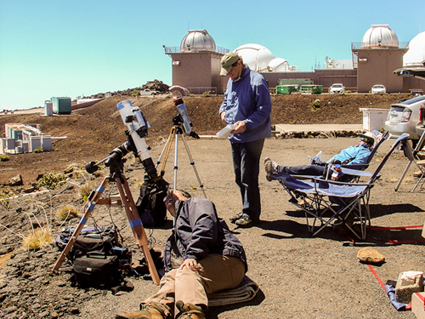 |
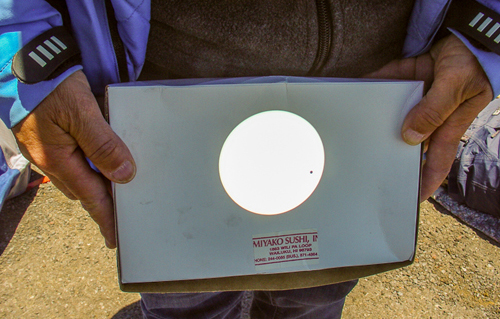
|
|
| Greg demonstrates a more comfortable way to view the transit using a spotting scope for solar projection. The U.S. Air Force satellite tracking facilities are in the background. | ||
|
The transit began just after noon, making for an uncomfortably high sun angle, and went until a few minutes before sunset when the sun was extremely flattened by atmospheric refraction (we were actually looking down on the setting sun from the 10,000 ft. elevation). 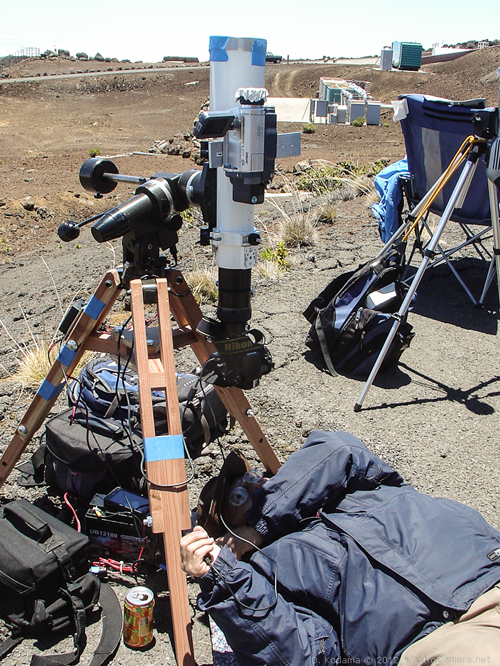
|

Sun at ~12:30 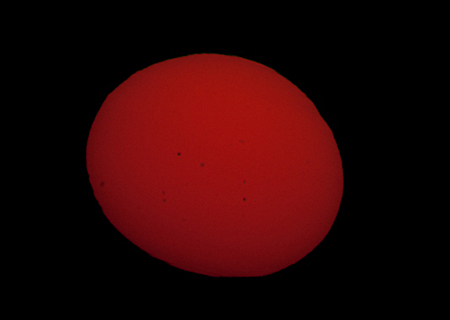
Sun at sunset |



